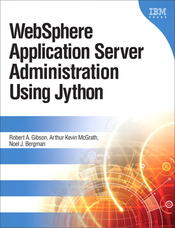|
In this article and some related articles, we are going to examine the architecture of WebSphere Application Server. Unlike the other application server products in the marketplace, at its core, WebSphere Application Server is a collection of networks. That is because WebSphere Application Server is meant to scale. IBM considers WebSphere Application Server to be its enterprise integration platform of choice. While there are many ways to perform systems integration, IBM chose to use a collection of loosly coupled networks. It is convenient to think of WAS architecture in terms of these networks.
- A network of centrally monitored and controlled application servers, web servers, proxy servers, and generic servers that transmit content back to end users. This network uses the hypertext transfer protocol. Application servers and generic servers in this network host J2EE enterprise applications. Application servers, generic servers and web servers in this network also serve up static HTML pages. This network achieves moderately tightly coupled integration by communicating with customers via the hypertext transfer protocol and communicating with existing back end services using database queries, enterprise java beans and Java Connector Architecture.
- A network that exists to facilitate very loosely coupled enterprise wide system integration. IBM calls this network the Service Integration Bus. We also call it WebSphere default messaging. You can connect this network to messaging middleware products like IBM's MQ Series.
- The network that does the actual monitoring and control of all those servers. When we use either the admin console or the scripting language to perform administrative tasks, we are interacting with this network. Parts of this network use Sun's Java Management Extensions (JMX)
- Several specialized networks that are designed to help balance what could be very high volumes of traffic across a potentially very many servers. Examples of these networks include
- data replication services
- clusters
- object grid
WebSphere eXtended Deployment or WebSphere eXtreme Scale or WebSphere Virtual Enterprise are larger, more complex examples of this kind of load balancing network. This article describes WebSphere Application Server XD
So we have one network that performs moderately tightly coupled system integration, one network that performs very loosely coupled system integration and multiple networks that exist just to administer servers and balance the workload across multiple servers. See the links above for details about each of these networks.
| 